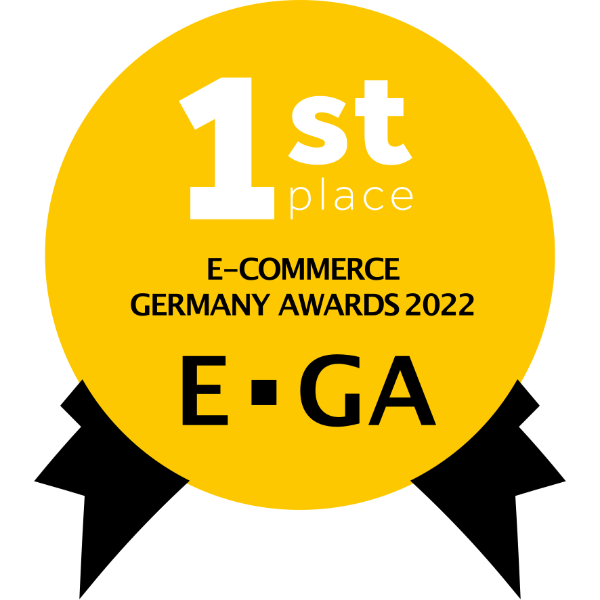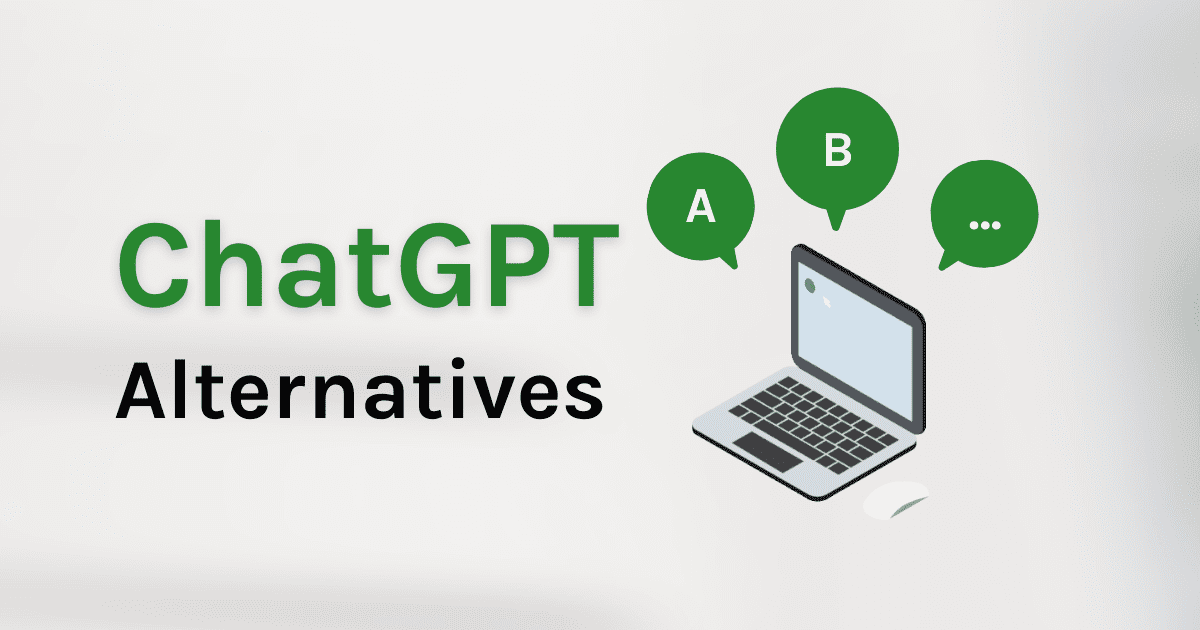
ChatGPT Alternatives: The 10 Best Tools (for E-Commerce)
Competition in e-commerce is constantly increasing. That's why it's essential for businesses to have engaging and informative content that serves the right purpose – educating users and providing important information. For this reason, many companies rely on automated copywriting tools to quickly create meaningful texts. ChatGPT from OpenAI, in particular, is enjoying great popularity due to the associated hype.
Besides ChatGPT, there are many other alternative copywriting tools suitable for e-commerce use and some are even better for certain tasks.
In this blog post, we'll explain why ChatGPT is of limited use for e-commerce and present you 10 alternatives that you should consider for automated content creation instead.
ChatGPT has limited use in e-commerce
While many companies have been using automated content generation for years, the media hype around ChatGPT has brought automated writing to the general public. But for commercial use, ChatGPT's answers and outputs are often not enough. Especially when it comes to mass text production, ChatGPT is not a good solution. This is because it is necessary to check each text for quality and correctness. For e-commerce companies, therefore, there are other alternatives, as consistent quality and accurate product descriptions are essential in this environment. Here, the use of data-to-text software is recommended. We will explain these in more detail below.
Good uses for ChatGPT in e-commerce include:
- Tool to help you write blog posts
- Idea provider for marketing campaigns
- Answering recurring customer queries through a chatbot
- Assistance with writing and responding to emails
ChatGPT vs. Data-to-Text: How does automated content generation work?
Automated content generation works on the basis of Natural Language Generation (NLG). There are two NLG technologies: GPT and Data-to-Text. But how do they differ?
Data-to-Text
Data-to-Text software allows you to generate high-quality text based on structured data. This means that you, as a user, are always in control over the text results. You can intervene in the text creation process at any time and make adjustments. This control ensures the consistency of the text quality as well as the topicality and correctness of the texts. The Data-to-Text software is particularly suitable if you want to create hundreds or thousands of different high-quality product descriptions within a few moments. This saves you time and money, and makes it easier to maintain and customize your content. You'll also achieve more conversions and generate more traffic to product detail pages.
GPT
GPT stands for "Generative Pre-trained Transformer". This is a large language model that has been trained with hundreds of billions of texts from the Internet. In contrast to Data-to-Text, the GPT model is particularly suitable for generating individual texts. The user has no control over the generated content, and proofreading is essential because the quality of the texts varies greatly.
The following overview shows you a brief summary of which technology has which functions and for which use cases they are suitable. The overview is available as a free download:
The most obvious advantages of using AI-powered copywriting for e-commerce are (cost) efficiency and speed. In addition, different industries benefit from automated content generation in different aspects. When it comes to choosing a software provider, e-commerce businesses are spoiled for choice. Below you will find 10 ChatGPT alternatives for e-commerce.
Get started!
Our experts will answer any questions you may have about our software, your potential use case, etc.
1. AX Semantics
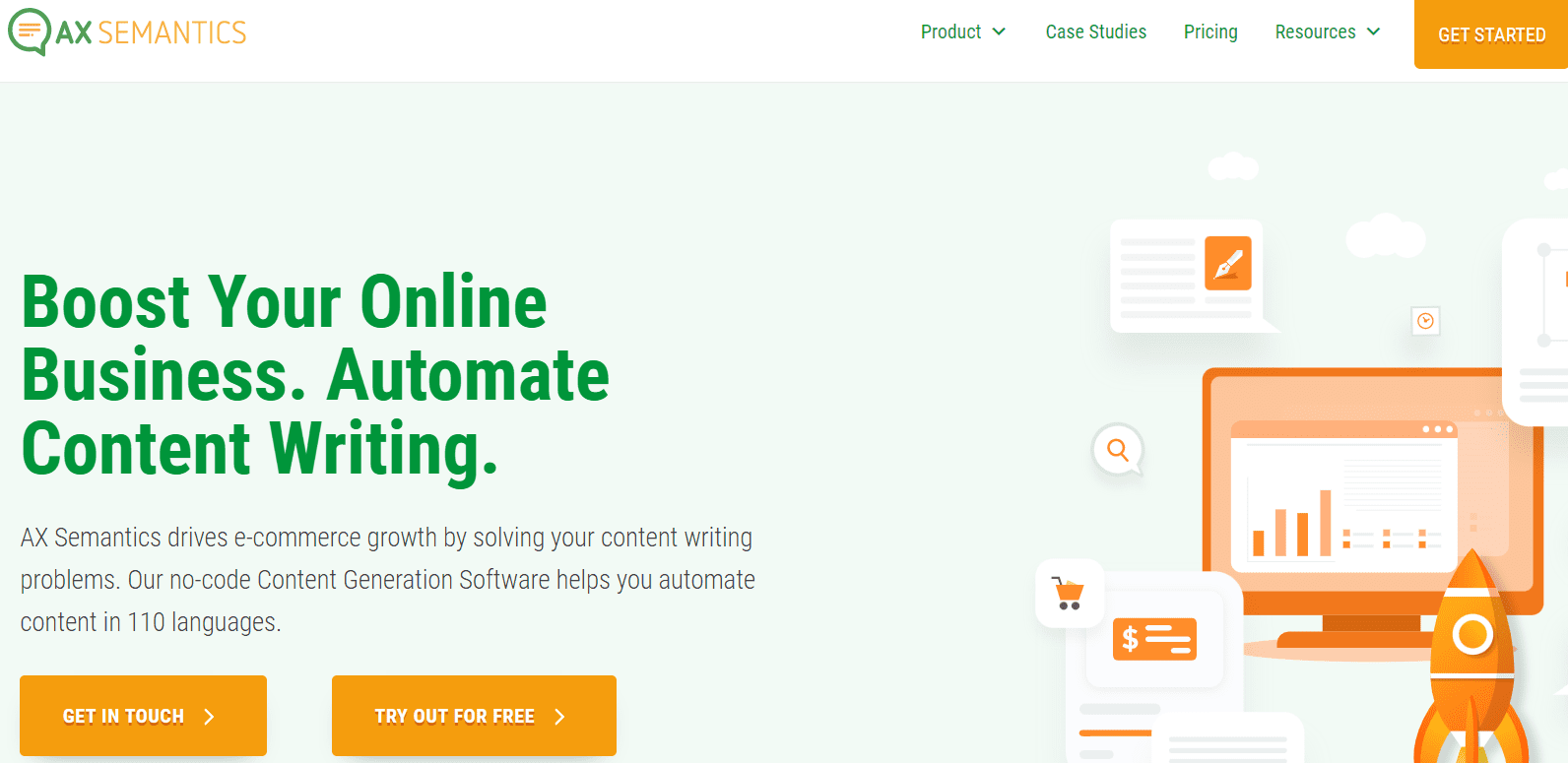
AX Semantics is the only Data-to-Text software on this list and therefore works differently than the GPT-based tools. This results in some differences in function and application.
AX Semantics is a data-driven content automation platform that helps organizations to create high-quality, personalized text from structured data sources such as spreadsheets and databases. It is cloud-based, easy to use and has natural language processing capabilities to automate various tasks. The scalability of content generation makes the software particularly suitable for automated content creation of a larger text requirement - while maintaining consistent quality. Scalable is also the multilingual text creation process, which is possible in up to 110 languages. This allows you to internationalize your content quickly and cost-effectively.
Customer satisfaction:
⭐4.8 out of 5 stars in Google reviews
⭐4.3 out of 5 stars on the software rating platform G2
Pricing:
- Editor - from 279 € per month
- E-Commerce Suite - from 699 € per month (additional add ons available)
- Custom Pricing
- Free trial period: 14 days
2. Jasper
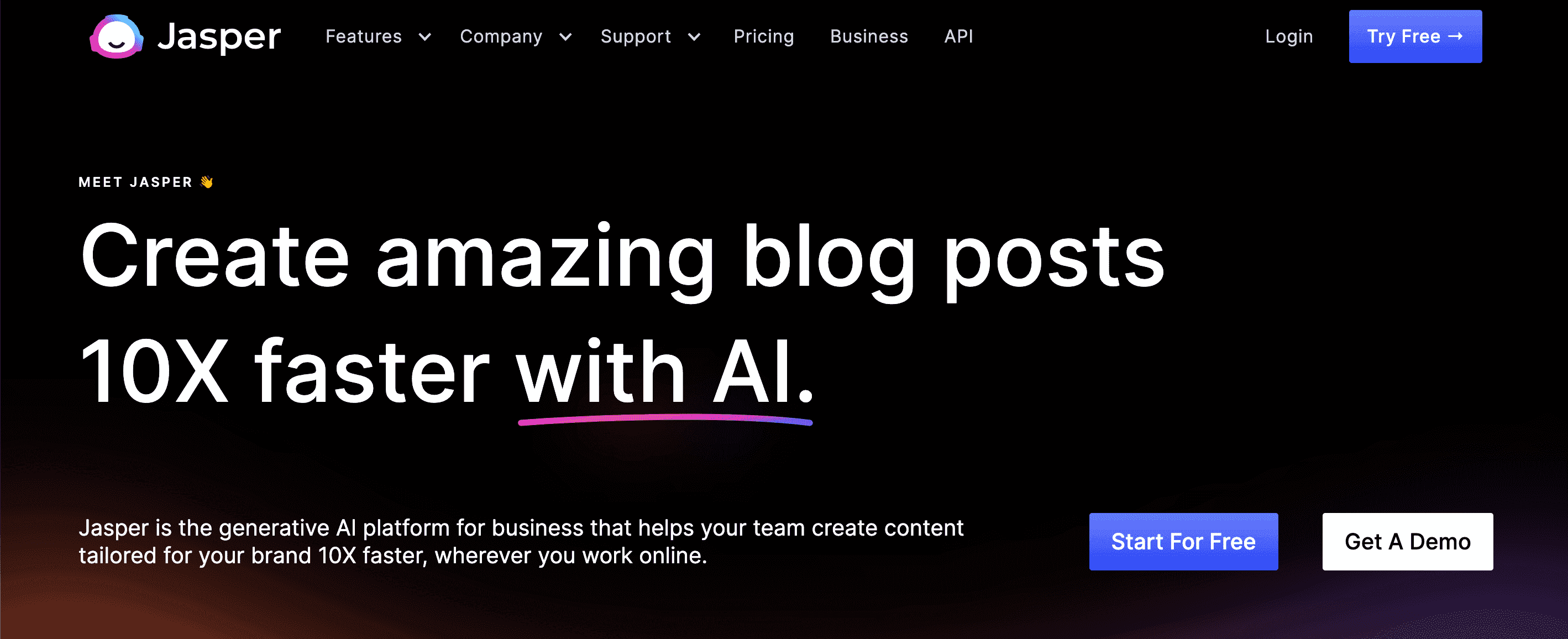
Jasper is a powerful content creation platform that allows users to quickly create unique texts using natural language processing (NLP). Based on given sentences, a question or a prompt, the tool is able to create single sentences or entire blog posts. Jasper is especially recommended for creating long texts such as blog posts, as it can speed up the writing process if enough information about the topic is available.
In addition to generating new content, Jasper also has features like text summaries, as well as creating social media posts, YouTube descriptions, Quora replies, Facebook and Google ads, Amazon listings, and press releases. The tool is not recommended for scaled copywriting, such as generating hundreds or thousands of product descriptions.
Customer satisfaction:
⭐3.9 out of 5 stars in Google reviews
⭐4.7 out of 5 stars on the software review platform G2
Pricing:
- Starter - 29 USD per month - 20,000 words with limited features
- Boss mode - 82 USD per month - 100,000 words
- Business - on demand, from 499 USD per month
- Free trial period: 5 days
3. Neuroflash
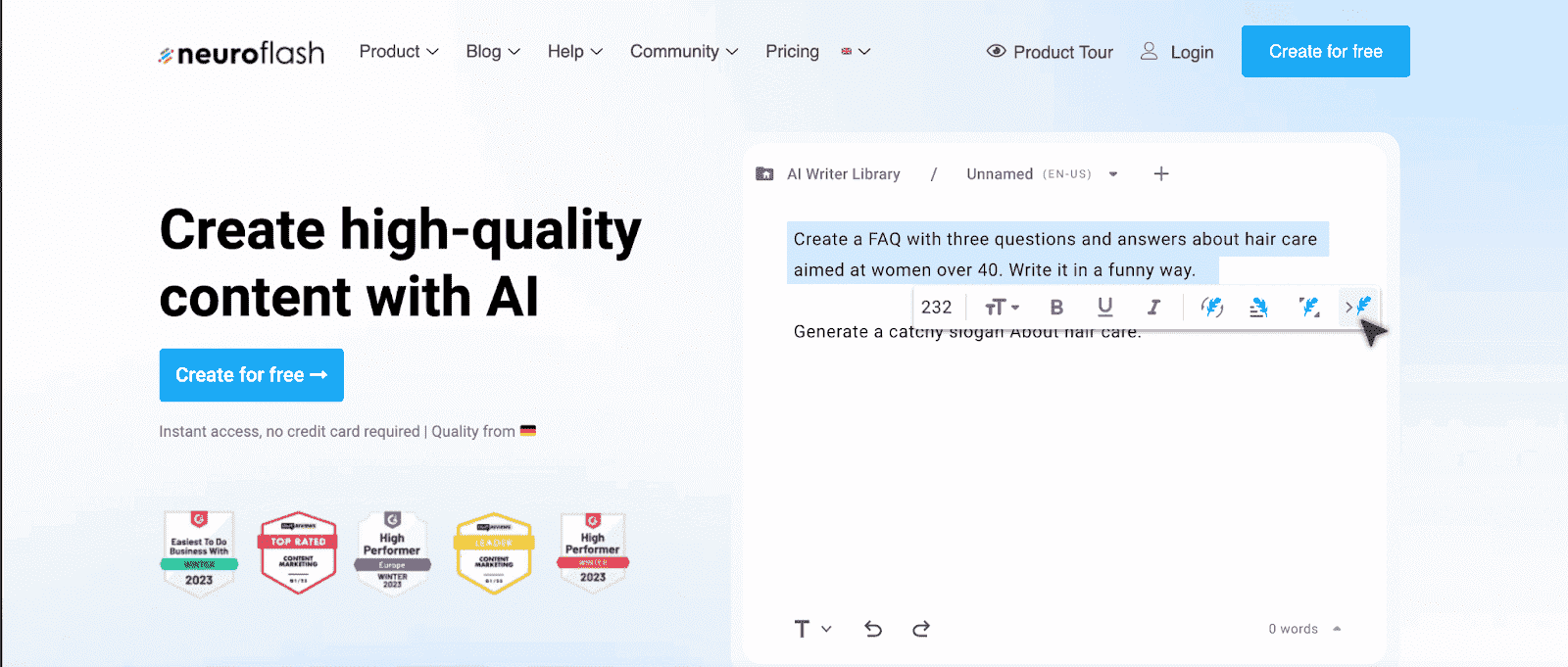
Neuroflash is an AI-powered copywriting tool and a good alternative to ChatGPT. With the release of ChatGPT, Neuroflash has published its own chatbot. Like ChatGPT, Neuroflash is based on GPT-3.5 and is particularly suitable as an idea provider for marketing teams. Neuroflash helps them to create effective advertising texts and saves time in the process. In this course, Neuroflash is also suitable for copywriters, bloggers and copywriters. For example, as a tool for creating blog posts, even in multiple languages, for summaries or reformulations.
A special feature of Neuroflash is the automated image creation based on the created text.
Customer satisfaction:
⭐3.6 out of 5 stars in Google reviews
⭐4.7 out of 5 stars on G2
Pricing:
- Free - 2,000 words per month
- Basic - 29 euros per month - 20,000 words
- Power - 59 to 139 euros per month - 100,000 to 400,000 words
- Premium - 199 Euro per month - Unlimited
4. Chatsonic
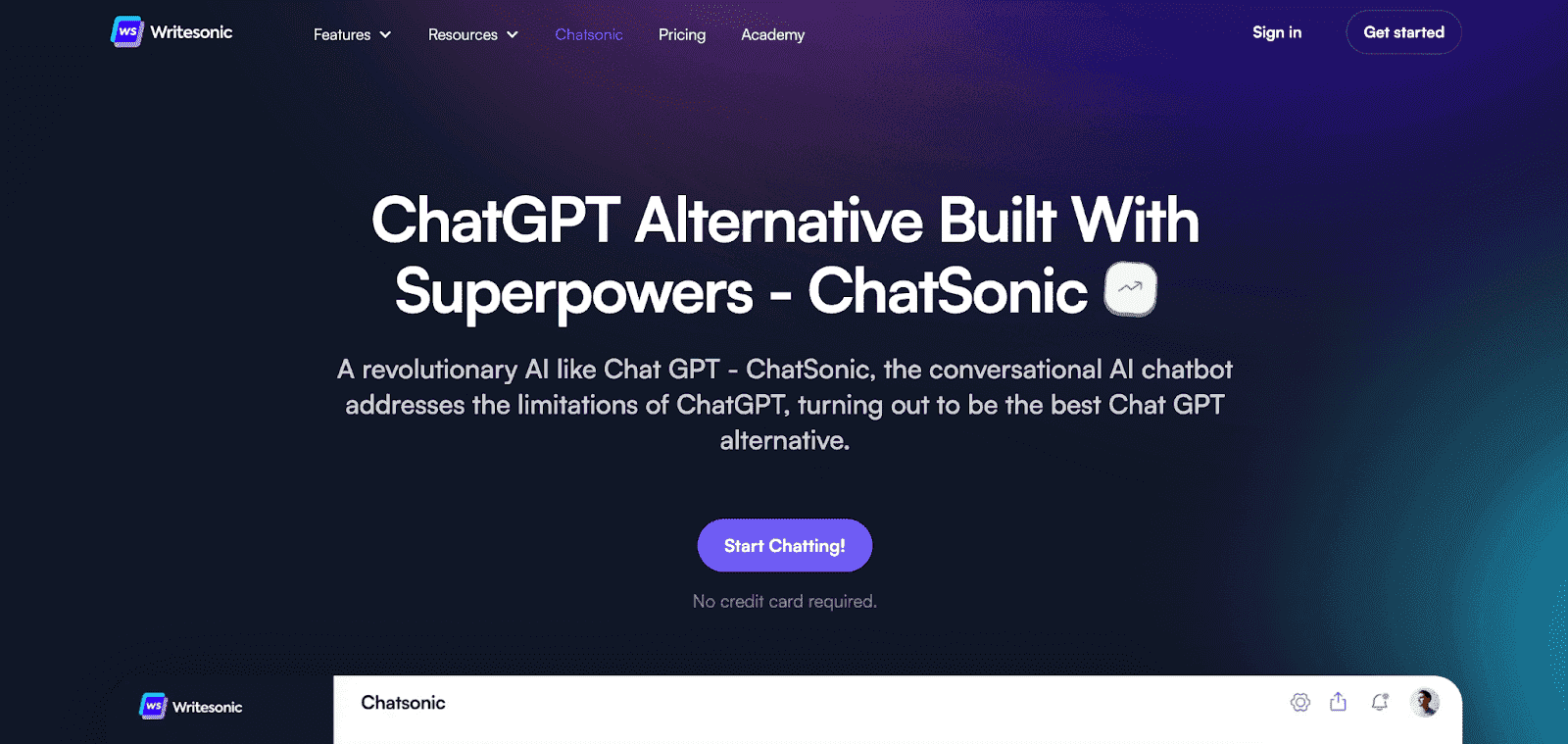
Chatsonic is a new tool from AI writing software provider Writesonic. Chatsonic, as the name suggests, is a chatbot that works similarly to ChatGPT. Writesonic itself calls it the best alternative to ChatGPT. In fact, Chatsonic outshines its competitor in terms of timeliness. This is because, unlike ChatGPT, Writesonic's chatbot is not trained with data up to a certain point in time, but is able to access up-to-date information from Google. Nevertheless, checking the correctness of the information is necessary.
In contrast to ChatGPT, writing code is not yet possible with Chatsonic. Chatsonic is primarily aimed at content teams and content creators who write longer texts or even books.
Customer satisfaction:
⭐ 4.1 out of 5 stars in the Google Play store
Pricing:
- Free trial - 6,250 words - one user
- Long-form - starting at $12.67 per month - 47,500 words or more
- Custom - on demand
5. CopyAI

CopyAI is a powerful tool specially designed to write precise advertising texts tailored to a specific industry, product category or service. Although CopyAI can create different types of online texts, it is more suitable for creating short sales texts.
The tool is best suited for content marketers who are just growing their business and need a quick solution for creating large volumes of product descriptions. CopyAI is also suitable as an idea provider for content development and outline creation. In use, it is as simple as ChatGPT: the user simply selects a text type and enters certain instructions and parameters - CopyAI does the rest.
Customer satisfaction:
⭐4.8 out of 5 stars on G2
Pricing:
- Free - for 2,000 words per month
- Pro - 36 USD per month - unlimited number of words
- Free trial period: 7 days
6. Article Forge
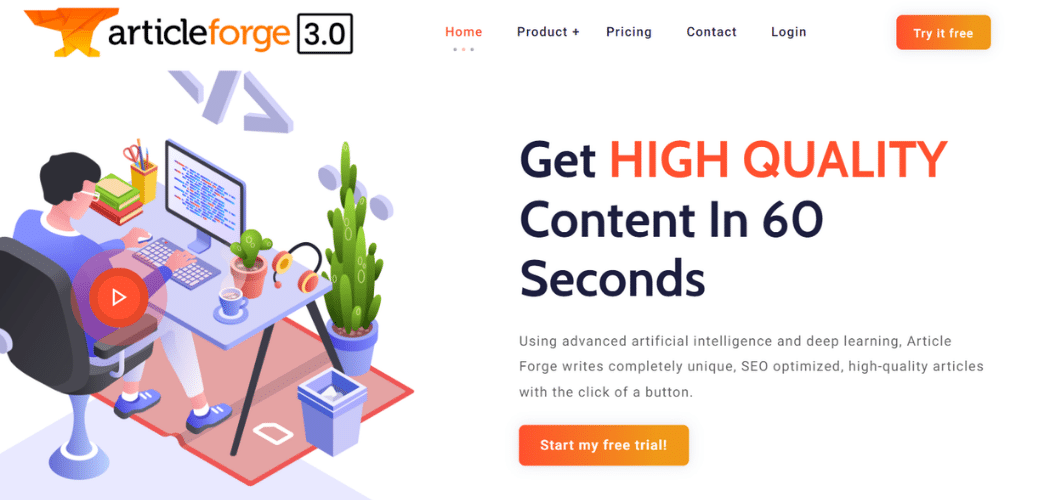
Article Forge is a tool that is suitable for creating blog posts when the formatting of the text is secondary. The software is also suitable for mass content production when fast results are needed. While the high speed is one of the biggest advantages of this tool, it shows qualitative weaknesses. These are also evident in the automatic creation of blog posts. Although the user determines the length of the post himself, he has to deal with repetitive information and unnatural wording. As with ChatGPT, before using the texts, it is necessary to check the created content again and revise it if necessary.
Customer satisfaction:
⭐4.1 out of 5 stars on G2
Pricing:
- Standard - 27 USD per month, 100,000 words - 1 user
- Business - number of words and users on request
- Free trial period: 5 days
7. Rytr
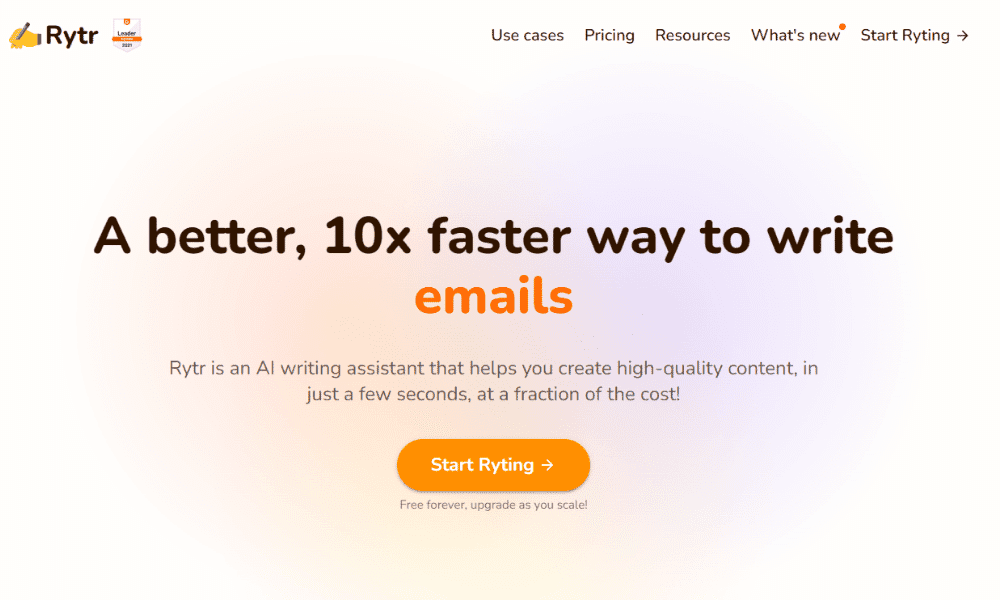
Rytr is not the most advanced content automation software on the market. However, the tool is easy to use and creates engaging content. Rytr acts as a personal writing assistant that saves time spent on manual text editing. The tool uses artificial intelligence to analyze the input text to detect errors in grammar, style or tone. There is also a handy plagiarism checker that ensures that the texts are unique. The tool can therefore be useful for smaller companies that do not want to invest a lot of money in hiring an editorial team.
Customer satisfaction:
⭐4.7 out of 5 stars on G2
Pricing:
- Free - 10,000 characters
- Saver Plan - 9 USD per month - 100,000 characters
- Unlimited Plan - 29 USD per month - unlimited characters
- Free trial period: 2 months
8. Youchat
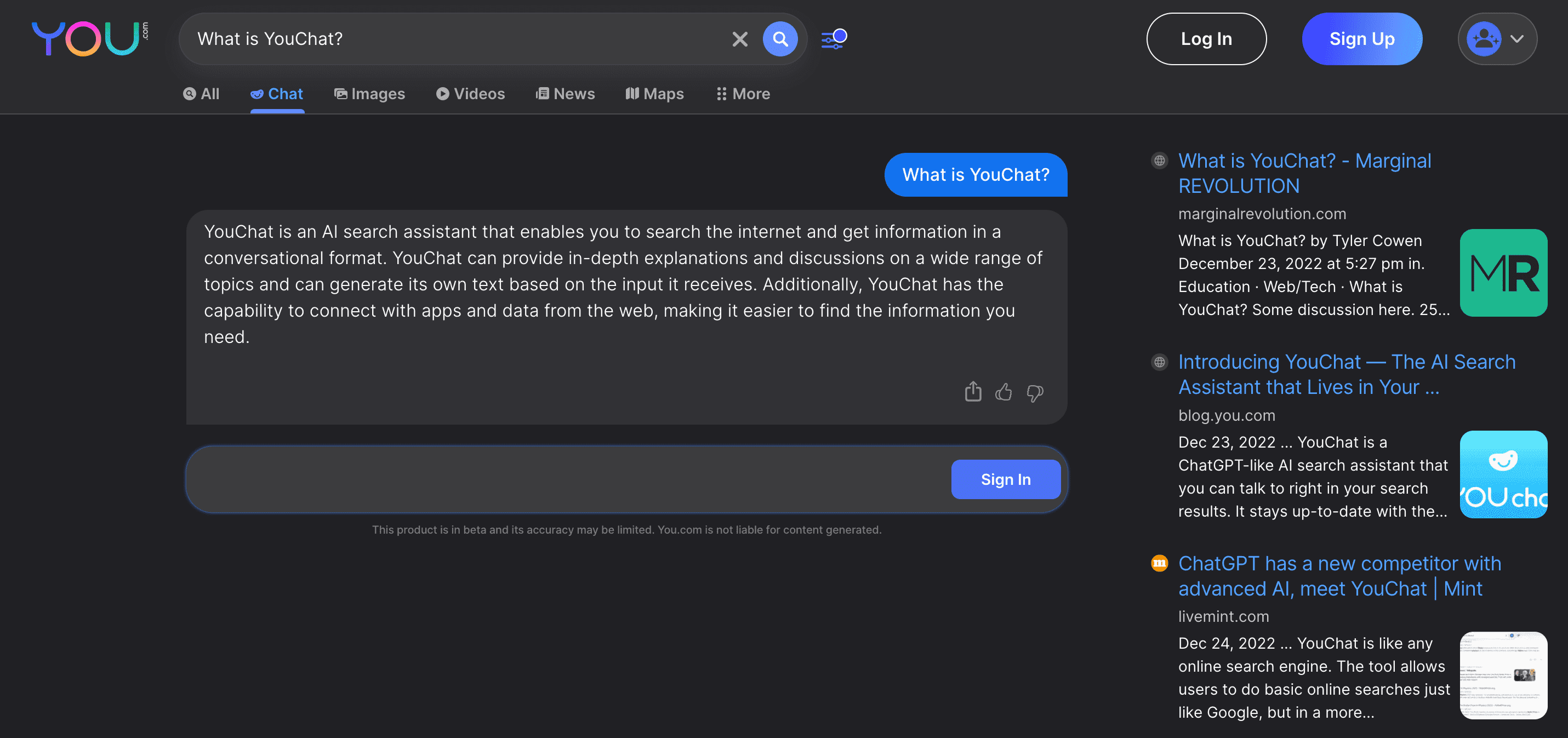
YouChat, from you.com, is the first chatbot integration on search results pages that is publicly available. YouChat is an AI that answers general questions and explains things like a chatbot. But the ChatGPT alternative also suggests ideas, translates or summarizes text, and can help write emails and code. Unlike ChatGPT, which has been trained with data through early 2022, YouChat continuously pulls information from the Internet, making it more up-to-date. However, this also means that the answers can be wrong. Advantageously, the chatbot often displays sources for the answers, which is not the case with ChatGPT.
9. Google Bard
After some people and even SEO experts predicted that ChatGPT heralds the demise of the world's biggest search engine, Google has released its answer to ChatGPT: Bard. Bard is based on Google's LaMDA language model. Sundar Pichai, CEO of Google and Alphabet, released a statement on the release of Bard, describing the chatbot as "an experimental conversational AI service."
Bard is so far only available to "loyal customers" in a test version, but is expected to be available to the general public in spring 2023. Google demonstrates how Bard works in this depiction:
Like ChatGPT and GPT-3, Bard relies on huge amounts of text available on the Internet for content generation. This means that the program pulls information from the web to help users answer their questions. It remains to be seen how Bard will change the Google search engine and what impact it will have on content creators. Because some experts fear that Bard will drastically reduce informational search traffic (i.e. users searching for information and finding it on your website) for websites.
Bard is expected to be integrated into Google's search results page, as well as available as a standalone tool. As a standalone tool, it is likely that it will be of equal interest to businesses in terms of usage as YouChat.
10. Bing Chat
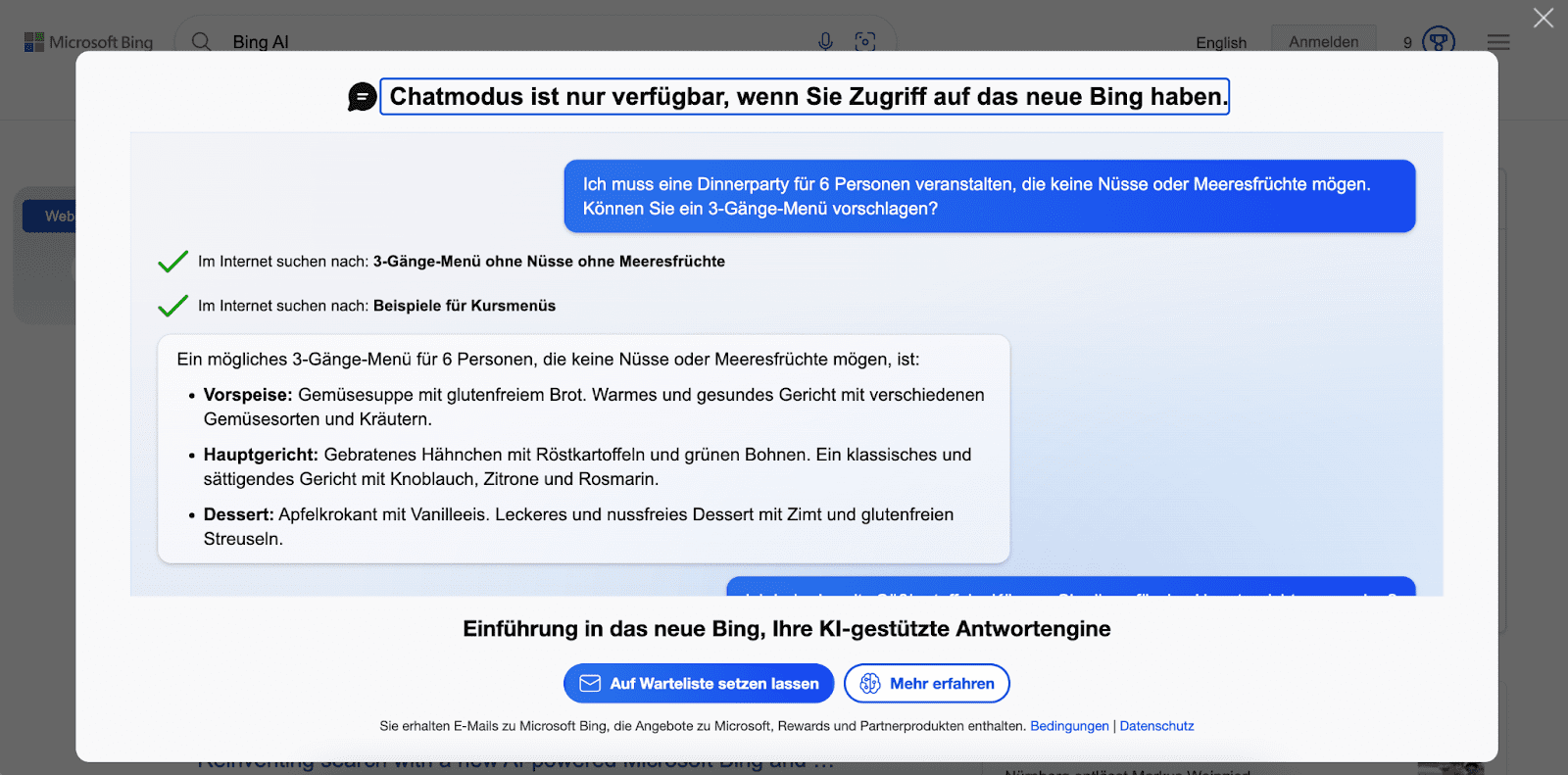
Bing Chat is the new chatbot of Microsoft's search engine Bing. The chatbot is integrated into the search engine and allows users to communicate with the search algorithm as well as get direct answers to questions.
The system is based on ChatGPT's language model to create natural-sounding conversations and interact with users. The system can also carry out custom content generation based on input data to provide explanations and descriptions on a variety of topics. Similar to YouChat, responses often include source information.
Conclusion
AX Semantics, ChatGPT, Chatsonic, Neuroflash, Jasper, Youchat. Finding the best tool for automated content creation is not so easy with the abundance of software on offer – and above all it depends on the use case. For example, not all tools are suitable for writing product descriptions.
If you want to create many texts, such as product or category descriptions, a Data-to-Text software like AX Semantics is suitable. This enables the generation of thousands of uniquely written texts in constant quality. In addition, SEO and quality standards can be implemented in a scalable way.
If you want to create smaller amounts of text, such as long-form content like blogs, many GPT-based tools such as ChatGPT, Jasper and others are a good option. Among other things, these also help you with brainstorming for marketing campaigns, writing emails, creating social media posts, etc. With all GPT-generated texts, it is essential to check the quality of the content created and its accuracy.
FAQ
AI writing tools based on data-to-text technology require structured data to develop relevant and high-quality content. You can use AI content generators for various purposes, including creating of product descriptions, chatbots, customer service, and content automation. However, AI authoring tools based on GPT-3 use an algorithm that has been trained to look for patterns in millions of web pages.
GPT stands for Generative Pre-trained Transformer and is a model that uses deep learning to produce human-like language. The NLP (natural language processing) architecture was developed by OpenAI. GPT uses a large corpus of data to generate human-like language representations. It is a language model that learns from existing text and can provide different ways to end a sentence. It has been trained on hundreds of billions of words, representing a significant portion of the Internet - including the entire corpus of the English Wikipedia, countless books, and a dizzying number of web pages.
GPT-3 was used as a basis to build the NLP model ChatGPT, which is capable of understanding and generating human-like conversations in real time. ChatGPT is an AI-chatbot. It's designed to generate natural and human-like conversational responses in real-time, and is able to do so in many different languages – one at a time. ChatGPT is derived from the GPT-3.5 language model, and is described by OpenAI as a "fine-tuned" version of it. It is designed to give users fast, accurate, and helpful answers to their questions.
Data-to-Text refers to the automated generation of natural language text based on structured data. Structured data are attributes that are available, for example, in the form of tables. The users have full control over the text result, as they can intervene in the text generation process at any time and make updates or adjustments. This control ensures text consistency, meaningfulness and quality. Texts are also customizable and scalable. This means that hundreds of texts on products with variable details can be created in a matter of moments.


